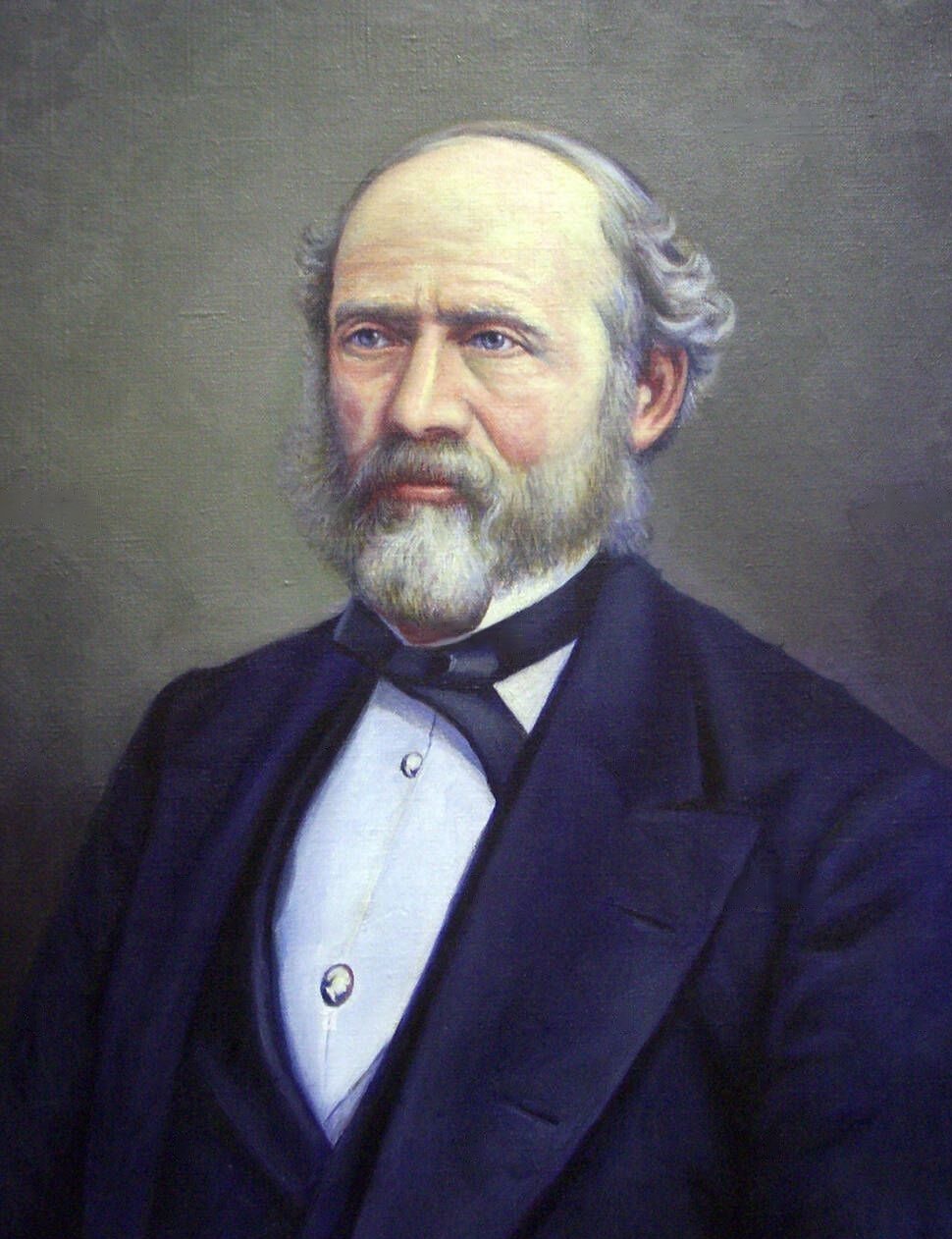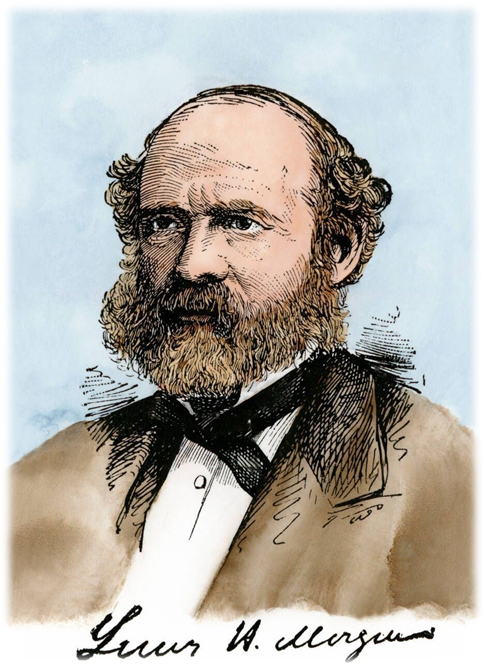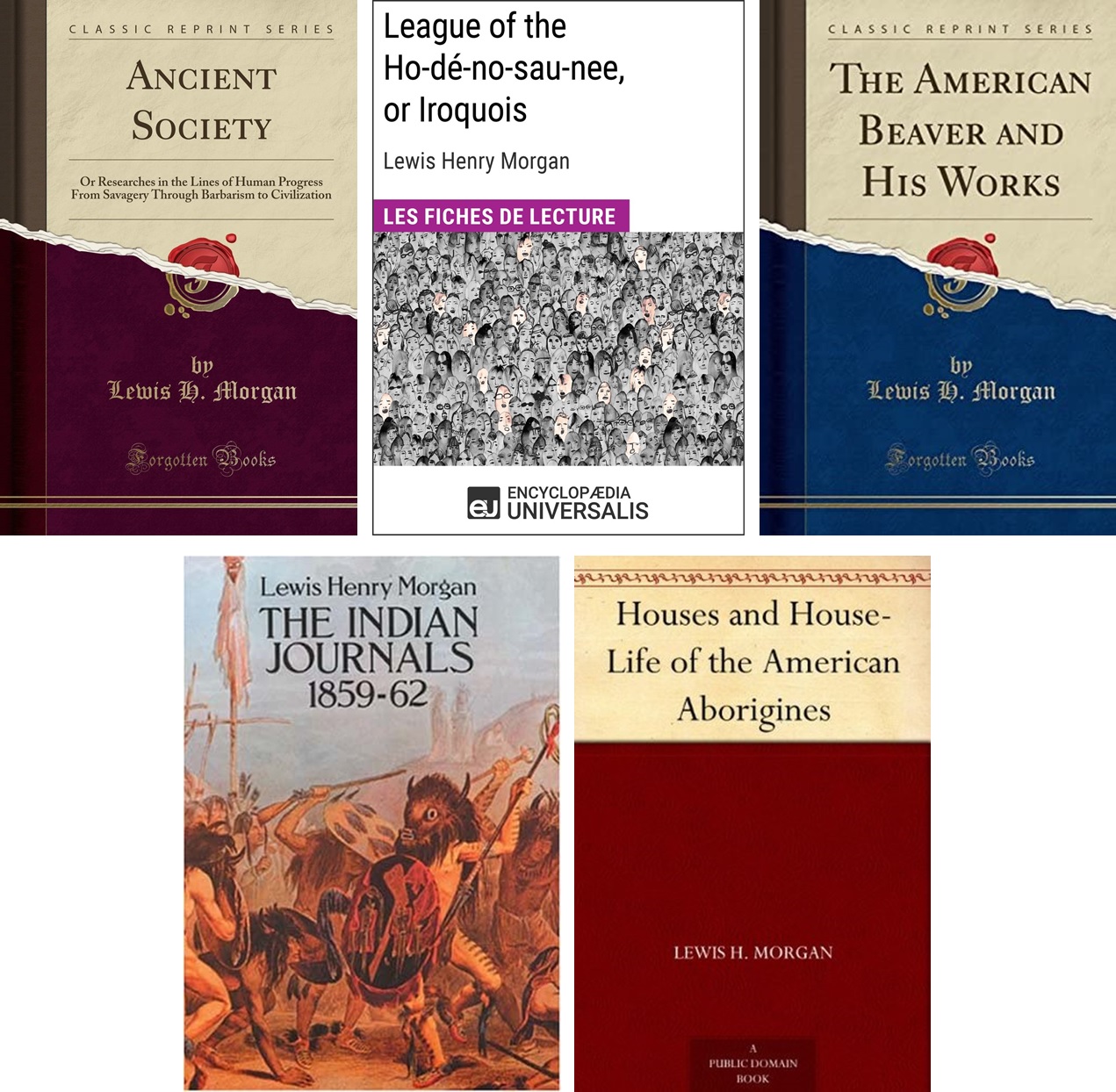Lewis Henry Morgan
[1818-1881]
Lewis Henry Morgan was a writer, anthropologist, and ethnologist from the United States. He was a pioneer of American anthropology and is best known for his studies of kinship and the evolution of culture.
What was Morgan's progress as a sociologist? ? Get to know more about him and his life in this article.
I. Lewis Henry Morgan Biography
He received legal training, and he worked as an attorney for a while. Morgan, who represented the Seneca Native American tribe, developed a deep interest in their culture and history and stood by them as they resisted being oppressed by white people.
He began to be intrigued by their kinship systems, so he broadened his research to include additional tribes in different regions of the United States. He then published the findings in a book that established kinship systems as one of the key organizational concepts in cultural anthropology.

1. Who is Lewis Henry Morgan?
On November 21, 1818, Lewis Henry Morgan was born in Aurora, New York, a small rural community in Rochester, New York. Jedediah and Harriet Morgan, his parents, were natives of New England. Following his graduation from Cayuga Academy in Aurora, Morgan enrolled at Union College in Schenectady, New York, to pursue a legal education. After earning his A.B., he started working in Aurora. He established a law practice in Rochester in 1844.
Morgan studied the Classics of Ancient Greece and Rome in addition to his legal work. He had a deep admiration for Native American Indians and was enchanted by exotic and ancient cultures. In Rochester, he became a member of a young men's social club, which he later renamed the "Grand Order of Iroquois" in honor of the Iroquois tribe. His 1851 publication Ho-de-no-sau-nee or Iroquois was a best-seller.
2. Lewis Henry Morgan early career
In the latter half of the 1840s, Morgan took a case for the Seneca tribe and represented them in Congress as they fought the Ogden Land Company for ownership of their land. Morgan was eventually adopted by the Seneca and given the name Tayadaowuhkuh, which means "One-bridging-the-gap" or "One-bridging-the-One".
Morgan made investments in mining and railroad businesses in the 1950s and amassed a modest fortune. After that, he made the decision to devote more time to anthropology and to develop his interest in it further. He observed that the Native Americans of North America had a distinctive kinship structure, which he chose to investigate further. In his book The Indian Journals, Morgan eventually became the first to organize the Indian kinship system of relationships.
Morgan made frequent trips to the northern wilderness where he also developed an interest in beaver habits while meeting and studying with Indian tribes. In 1868, he released The American Beaver and His Works.
In the 1860s and 1870s, Morgan published numerous shorter ethnology papers. He is still well-known, though, for his masterpiece Ancient Society, in which he first proposed his theory of cultural evolution.
3. Lewis Henry Morgan Contribution
Morgan's theory of cultural evolution, which he based on his observations, is a theory of unilinear evolution with three basic stages of development that all human societies went through: hunter-gatherer, agriculture and metalworking , and the highest stage, which starts with writing . According to Morgan, there were also different stages in the evolution of family structures, ranging from incestuous relationships and promiscuity to group marriages and polygamy before reaching the most developed stage of monogamous marriage.
Even though Morgan's unilinear model particularly as it relates to the growth of family relationships has been challenged and rejected, many of his fundamental principles are still relevant today. Although Morgan's own views saw material development not as the cause of social development but rather as a necessary condition for it, with humankind developing from a common origin and being guided from savagery to civilization by God's hand, Karl Marx and Friedrich Engels adopted his connection between technological development and social development in their materialistic account of human progress.
II. Lewis Henry Morgan on Sociology
The League of the Ho-de-no-sau-nee or Iroquois was written by Morgan with assistance from his Seneca tribe friend Ely S. Parker of the Tonawanda Creek Reservation . With the help of his preliminary research, he was able to consider more broad issues regarding human social organization, and this book went on to become one of the earliest examples of ethnography.
Four expeditions were led by Morgan between 1859 and 1862. To learn about kinship terms and other facets of Native American culture, he traveled to the West, up the Missouri River as far as western Montana. His seminal Systems of Consanguinity and Affinity and Houses and House-lives of the American Aborigines, both based on his research, were among the many books he wrote. His intention was to use various stages in human evolution and social development to explain the wide variety of kinship systems found in indigenous societies.
Morgan supported social evolution, like Edward Burnett Tylor and Herbert Spencer. He put forth a unilinear theory outlining how he thought societies developed, from prehistoric to modern. He regarded Western civilization as the zenith of human development and fashioned the rise of all other societies after that of the West:
The ability of mankind to create the same tools and utensils, inventions, and institutions from the same original thought germs was made possible by the fact that the savage, the barbarian, and the civilized man all share a common principle of intelligence. A principle that has produced civilization through diligent application from humble beginnings is grandly impressive; from the arrowhead, which expresses the thought in a savage's brain, to the smelting of iron ore, which symbolizes the higher intelligence of the barbarian, and, finally, to the moving railway train, which could be considered the triumph of civilization.
His theory of social evolution, which was first put forth in the book Ancient Society , classified societies into three main stages:
- Slavery is the lowest level of development, when people lived a hunter-gatherer lifestyle and relied on hunting and gathering plants for food; at this level, neither soil tilling nor animal domestication had taken place;
- Barbarism is the intermediate stage of development, when people began to domesticate animals and learn about agriculture and pottery;
- Civilization is the final stage, when people learn how to write.

Seven stages altogether were created by further dividing the first two stages into three sub-stages each. Morgan categorized historical periods according to technological advancements, such as the use of fire, a bow, and pottery in the "savage" era, animal domestication, agriculture, and metalworking in the "barbarian" era, and the invention of the alphabet and writing in the "civilization" era. Morgan thus established a connection between social and technological advancement. According to Morgan, technological development is the driving force behind social advancement, and any social change—in social institutions, organizations, or ideologies—has its roots in technological development.
Patterns of marriage, family, and political organization corresponded to each stage. Morgan said in Ancient Society:
"It is undeniable that some members of the human family have lived in savagery, while others have lived in barbarism, and still others have lived in civilization. It also appears that these three different conditions are linked to one another in a normal and necessary sequence of development."
According to Morgan, the first human society was a "horde living in promiscuity" with no discernible family unit. Marriage structures and family structures emerged over time. While there were still sexual relationships between brothers and sisters in the second stage, such relationships were forbidden in the third stage. The third stage was when group marriages were used as a practice. Males and females cohabited loosely in the fourth stage, which corresponds to the barbaric stages. Then came the male-dominated polygamous society, in which men had multiple wives, and then the monogamous-family society, which he regarded as the pinnacle of human relationship development.
Despite the fact that Morgan believed humanity was evolving from a common origin to a common destiny under the direction of a "Supreme Intelligence" or God, his theory became a significant turning point in the development of social Darwinism:
It might serve as a helpful reminder that our current situation, with its increased opportunities for safety and happiness, is the result of the sacrifices made by our barbaric and, further back in time, our savage ancestors. Their efforts, struggles, and victories were all part of the Supreme Intelligence's plan to turn this savage into a barbarian and this barbarian into a civilized man (Morgan 1877).
III. Lewis Henry Morgan Death & Legacy
1. Where was Lewis Henry Morgan buried?
On December 17, 1881, Lewis Morgan passed away at his Rochester, New York, home. His estate joined the University of Rochester and is now home to a women's college.
2. Lewis Henry Morgan Legacy
The idea of cultural evolution and social Darwinism both developed in large part thanks to Henry Morgan's work. In order to complete their own accounts of the evolution of capitalist society, Karl Marx and Friedrich Engels drew on Morgan's descriptions of the evolution of indigenous peoples. As a result, many people interpret Morgan's writing in terms of Marxism.
Leslie White and Franz Boas both defended Morgan's legacy within the field of anthropology, while Leslie White criticized it. Today, unilinear theories of evolution are not widely accepted, and Morgan's evolutionary position is widely rejected.
The fact that Morgan was among the first to systematically study kinship systems, which have come to be seen as a fundamental organizing principle in pre-urban societies, is still acknowledged by many anthropologists. The University of Rochester's Anthropology Department hosts an esteemed annual lecture in Morgan's honor each year.
IV. Lewis Henry Morgan Books

1. Ancient Society (Classics of Anthropology)
Lewis Henry Morgan gathered a vast amount of information about the history of prehistoric-communal society while researching the American Indian way of life. He bases every conclusion he makes on these facts, and in cases where he doesn't have them, he uses the information at his disposal to support his arguments. By connecting each period with the advancement of production techniques, he was able to determine the periodization of prehistoric society.
The development of human society from its infancy to the dawn of civilization can be seen in the "great sequence of inventions and discoveries," as well as in the history of institutions, including each of its three branches of family, property, and government. Through "the gradual evolution of their mental and moral powers through experience, and of their long struggle with opposing obstacles while winning their way to civilization," mankind has made progress.
2. The League of the Iroquois
The Iroquois are among the Native American tribes with some of the most extensive historical records. They are native to the northeastern United States and some regions of Canada, and they were some of the first native tribes that Europeans encountered. And yet, they have continued to be a mystery.
3. The American Beaver and His Works
Scholars have chosen this work as having cultural significance and as being a foundational piece of civilization as we know it. In the United States of America and possibly in other countries, this work is considered to be in the public domain. The body of the work is not subject to any entity's (individual or corporate) copyright, so you are free to copy and distribute it throughout the United States.
4. The Indian Journals
Considered to be the father of modern anthropology, Morgan left behind extensive records of his research on kinship systems, social structure, dances and ceremonies, customs, and much more among the tribes of Kansas and Nebraska. He also provided invaluable information on climate, flora and fauna, topography, and natural resources. "
5. Houses and House-life of the American Aborigines
The last book by Morgan, "Houses and House-Life of the American Aborigines," which covered parts of North and Central America, was the first to address a set of issues that are still being discussed today: what can anthropologists and archaeologists learn about social organization from domestic architecture, and how does social organization interact with a system of production technology and ecological adjustment to influence domestic and public architecture?
WHAT IS YOUR IQ?
This IQ Test will help you test your IQ accurately
Maybe you are interested
